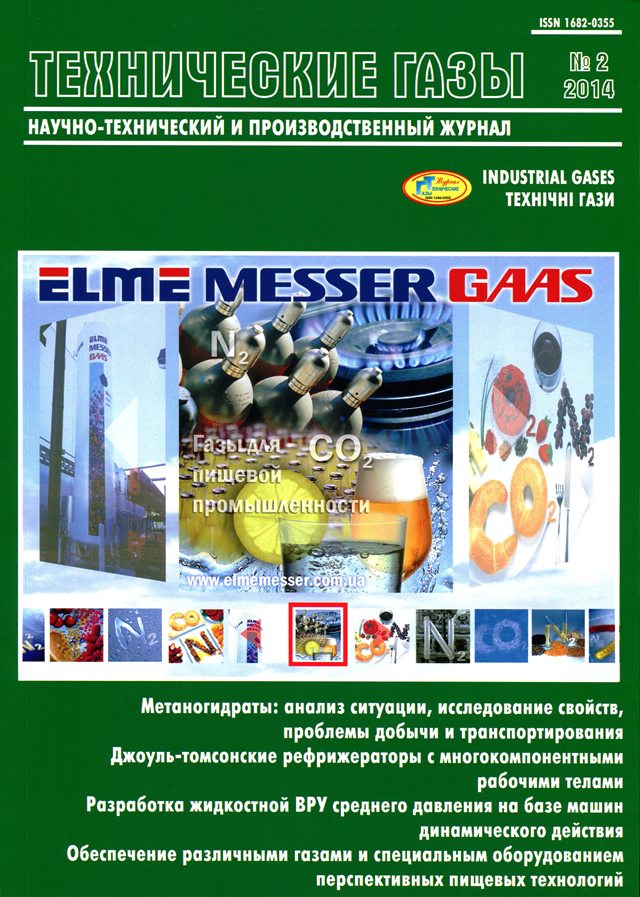ON THE REDUCTION OF INERTS INFLUENCE ON THE AMMONIA REFRIGERATION INSTALLATION CHARACTERISTICS
DOI:
https://doi.org/10.18198/j.ind.gases.2014.0719Keywords:
Refrigeration installation, Ammonia, Non-condensable gases, Deaerator, Removal of inerts, Condensation, Excessive energy consumption, Ammonia lossesAbstract
The performance of the ammonia refrigeration installation is influenced by the presence of inerts — non-condensable gases that are accumulated in the condenser and the receiver. The increase in the gases concentration leads to a decrease in the heat transfer coefficient of the condenser by 3...5 times, an increase in the pressure of ammonia condensation by 1...3 bars and to excessive energy consumption by 7%. The inerts removal reduces power consumption of the refrigeration installation, but some ammonia is lost. Various systems of non-condensable gases removal, the places of their accumulation and the installation of the blow-off valves are considered. The examples of connecting automatic inerts eliminators are presented. The reasonability of a multipoint automatic removal of the inerts has been pointed out.
References
Martin C. S. (2012). Condensation-induced water hammer in a horizontal pipe// Kerntechnik. — V. 77. — No. 2. — P. 94-100.
Philpott C., Deans J. (2004). The enhancement of steam condensation heat transfer in a horizontal shell and tube condenser by addition of ammonia// International Journal of Heat and Mass Transfer. — V. 47. — No. 17. — P. 3683-3693.
He J., Lin G., Bai L. et al. (2013). Effect of non-condensable gas on startup of a loop thermosyphon// International Journal of Thermal Sciences. — V. 72. — P. 184-194.
Yenco J. (1989). Purging non condensable gases// Heating, Piping and Air Conditioning. — V. 61. — No. 2. — P. 75-79.
Love R. J., Cleland D. J., Merts I., Eaton B. (2005). What is the optimum compressor discharge pressure set point for condensers// EcoLibrium (August 2005). — P. 24-29.
Andrusenko A.N. Mnazakanov G.K. (2006). Research and modeling of the processes condensation ammonia in the presence of non-condensable impurities inside horizontal tubes// Holodilnaya Tekhnika i Tekhnologiya. [Refrigeration Engineering and Technology]. — No. 6. — P. 19-25. (Rus.).
Encyclopedic Reference. V. 1. The technique of artificial cold. (1960).— M.: Gostorgizdat. — 544 p. (Rus.).
Reindl D. T., Denkmann J. L. (2001). Automatic purgers in refrigeration systems// ASHRAE Journal. — V. 43. — No. 8. — P. 30-36.
Downloads
Issue
Section
License
LICENSE AGREEMENT
After receiving an article for publication as required revision scientometric databases each author directs the license agreement on the assignment and transfer of the management of copyright. Signatures of the author (s) it is desirable to seal the personnel department of the institution where the author works (authors), or the seal of the Faculty.
Revision refers to the authors one layout for proofreading. Permissible only those fixes that result in compliance with the layout of the original text of the article. Significant changes are not permitted. Layout should be sent to the editorial office within days of receipt.

